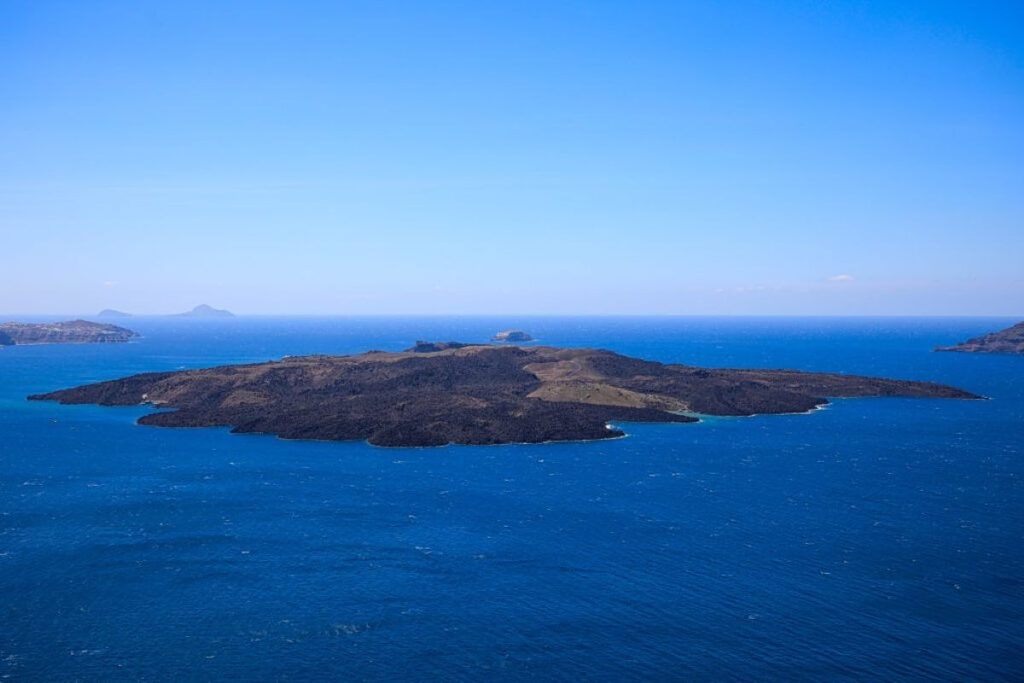
A team of international scientists has unveiled startling findings regarding the surge in earthquake activity in Santorini at the beginning of 2025. The increased seismic activity was attributed to a colossal vertical magma column, with a volume comparable to that of 20 large Giza Pyramids in Egypt. This revelation was published in the respected journal, Science, by a research team that included several Greek scientists.
The scientists estimate that this massive magma column penetrated more than 20 kilometers into the Earth’s crust. The volume of magma was so substantial that it could fill nearly 200,000 Olympic-size swimming pools or equate to 200 times the volume of the Great Pyramid of Giza. Such a quantity of magma would be sufficient to cover Manhattan or the islands of Bermuda with a layer approximately 9 meters thick.
Seismic Swarm and Local Impact
The seismic swarm, characterized by hundreds of significant earthquakes, some exceeding magnitude 5, occurred over a brief period. This intense seismic activity prompted a local state of emergency, leading to school closures and widespread concern among residents and tourists. The uncertainty surrounding the tremors, whether they were linked to volcanic activity or tectonic fault slippage, added to the alarm. The latter scenario is reminiscent of the catastrophic 7.7-magnitude earthquake that struck in 1956.
“It triggered a local state of emergency, school closures, and alarm among residents and visitors,” the researchers note.
Global Implications and Monitoring
The findings from this study suggest that the wave-like process of magma transport observed in Santorini is not an isolated phenomenon but rather a fundamental mechanism present beneath volcanoes worldwide. The researchers emphasize that the methods developed during this study could be instrumental in monitoring similar volcanic crises in near real-time, particularly in regions where activity occurs offshore or deep underground, beyond the reach of conventional measuring instruments.
Santorini, part of the Hellenic Volcanic Arc, has a storied history of catastrophic eruptions, most notably the ‘Minoan eruption’ around 1620 BC. Although the 2025 seismic crisis did not culminate in an eruption, it underscored the potential risks faced by residents and highlighted the critical need for continuous, high-resolution geophysical monitoring.
Historical Context and Future Preparedness
The announcement comes as a reminder of Santorini’s volatile geological past and the ever-present threat of volcanic activity. The Hellenic Volcanic Arc is known for its dynamic tectonic setting, which has historically led to significant geological events. The 1956 earthquake, for instance, remains one of the most devastating in the region’s modern history.
According to experts, the ability to predict and prepare for such events has improved significantly with advancements in technology and scientific understanding. The current study’s methodologies could enhance the global community’s ability to respond to volcanic crises, potentially saving lives and minimizing economic disruptions.
“The methods developed can help monitor similar crises in near real time, especially in areas where activity occurs far offshore or deep underground,” the researchers emphasize.
As the world grapples with the challenges posed by natural disasters, the insights gained from Santorini’s seismic activity offer a valuable lesson in preparedness and resilience. The ongoing research and monitoring efforts are crucial for safeguarding communities living in the shadow of active volcanoes.







